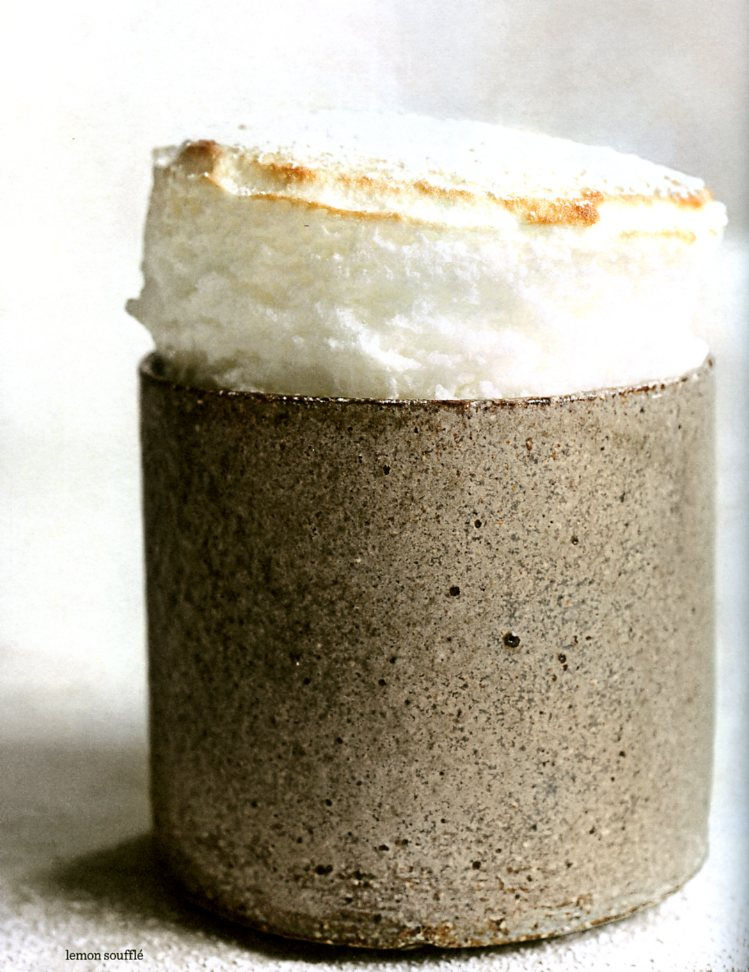I've never cooked a soufflé
- rosemarydearman1
- Aug 9, 2018
- 6 min read

"It feels more like magic than cooking." Nigel Slater
This is sort of a lucky dip. Last week I bought the 100th and last issue of the Donna Hay Magazine and whilst I don't remember being particularly enthralled by the recipes, I was blown away by its design. And so I have it on my desk ready to be dipped into now and then if I am feeling so inclined. And today I felt so inclined. The gorgeous picture at left is what I came up with. A lemon soufflé.
That picture is all about texture and colour, or lack of colour, is it not? Light, white, with just a touch of caramel orange/brown, fluffy soufflé poking over the rim of the opposite - a solid, rough, heavy pot sitting on a surface that is something in between.

The opposite page of the spread, includes the recipe and a few corny words on a background of that in between grainy surface set against a feather, to emphasise the lightness the soufflé embodies. I suppose it's all a bit obvious when you think about it, but really it was just so aesthetically pleasing to me. The stylist for this section on eggs was one Steve Pearce, and the photographer was Con Poulos. They deserve a mention.

The photograph at left is of the photographer. I could not find a picture of Steve Pearce, the stylist even though he has worked at Donna Hay Magazine for 14 years, won numerous awards and is much admired by many other food stylists. It's a bit like the cinematographer and the production designer on a film isn't it? Who does what? I think I am giving most of the credit to the food stylist. He must surely choose the props, make the food look good and arrange it all. The photographer would have to organise the lighting and choose the angle from which to shoot, the camera settings, etc. Anyway - to me it's art - and they deserve a mention. The soufflé is in a section on eggs, and here is some of the double-page spread that heralds this section. Another example of food art.

Alas the whole thing wouldn't quite fit into my scanner, but you get the idea. Such a simple idea and yet so beautiful. Again I think I give the marks to the stylist, but what do I know really.
But really I was going to talk a little bit about soufflés, and no I don't think I have ever made one. Whenever you look at recipes in books they always look so daunting. So I have been put off. I knew it involved whipping up egg whites, and as I know I am a complete failure with meringues, this was another reason I have not tried the soufflé.
Robert Carrier in volume three of his Cookery Course starts out in a very reassuring manner:
"The soufflé, a half-forgotten and much neglected culinary classic, is ready to come to your rescue. The marvellous versatility of this airy dish will make you wonder how long you managed so long without it.
For the appetising use of left-overs there is nothing to equal it. For economy in extending small bits of luxury - lobster, fresh crab, finely chopped fresh herbs, caviar, pheasant - it cannot be bettered. ...
It is probably true to say that the procedure of making a soufflé involves as many skills and techniques as any other branch of cooking. Yet all it is is a thick, highly flavoured, sauce-like base rich in egg yolks, combined with stiffly beaten egg-whites which cause it to rise to spectacular heights when subjected to the heat of the oven."
Simple eh? But then he goes on for over three pages on what to do and what not to do. So in the end you do feel a bit overwhelmed. Felicity Cloake too does the same trick. She begins well:
"Soufflés are God's gift to the dinner party cook. Somehow, this classic egg dish has acquired a fiendish reputation for failure that quite belies its simplicity, which means that anyone who manages to serve anything more voluminous than a water biscuit will be feted as the greatest chef since – well, that one who won the latest series of MasterChef. Even the name is in on the joke: far from the whispered breath of the word, soufflé is actually both tough and dependable" Felicity Cloake
This is all very encouraging and she even gives a scientific explanation of how you can't fail:
"if you manage to get any air into the mix, an inexorable law of nature will raise it in the oven. This is because, all else being equal, the volume occupied by a given weight of gas is proportional to its temperature" – so, as the air in the soufflé mixture heats up in the oven, it expands, and thus the mix swells in the only way open to it: upwards.
Interestingly, although this is a useful principle to have under your belt, McGee notes that it is actually only responsible for about a quarter of the soufflé's rise; the rest comes from the evaporation of water from the walls of the air bubbles into the bubbles themselves, adding to the interior pressure, and causing them to expand yet further." Harold McGee quoted in Felicity Cloake's article.
As this very short little video demonstrates.
But then she also goes on to detail all the things that could go wrong. But maybe this is indeed a recipe that you need to absorb properly before beginning. After all I was put off making risotto for years and years because all the recipes I had looked incredibly complicated and full of dire warnings.
Robert Carrier doe end his little lecture in a reassuring manner though:
"I have even dug a spoon into a soufflé, discovered that it was still raw, and returned it to the oven - whereupon having recovered from the initial shock, it has proceeded to puff up to even more majestic heights than before."
Nigel Slater is a bit more cautious though:
"If you make a soufflé for yourself it will work. It will puff up over the rim of the dish, be crisp on the outside and melting, almost oozing in the centre. You will probably want to take a photograph. And you will have to, as there will be no one else around to see it. Soufflés only tend to fail when other people are involved." Nigel Slater
Delia seems to prefer the twice-cooked method - which I shall deal with another time. So maybe she's not a fan. And I couldn't see any mention of soufflés in Elizabeth David's book of essays, although she does have recipes here and there.
I have eaten the occasional soufflé though. The most magical I remember is not just because of the magic of the soufflé - magic though it was. It was a strawberry soufflé at the now defunct Fanny's in Melbourne, one of our top restaurants at the time. But it was the time that was especially magic. The occasion was lunch before going into hospital across the road (also now defunct) to have my first baby induced. He was late, and so gave me the opportunity to taste this divine dish. If I concentrate I can still taste it. Maybe that is why I have never tried to make my own.
There are endless recipes out there - sweet and savoury and weird. Even Robert Carrier has one rather odd suggestion:
"I have never made a Chinese soufflé - with bean sprouts, water chestnuts, prawns and mushrooms but I don't see why it shouldn't be equally delicious in its own distinctive Chinese way!"
And obviously I am not alone in thinking this idea a bit weird, because when I looked I just could not find anything remotely similar to what he described. He was a man ahead of his time.
So should I be brave and give it a go, for it seems that fear is the problem?
“The only thing that will make a souffle fall is if it knows you're afraid of it.”
James Beard
But I don't think I believe in food sensing your fear. Mind you there are always solutions if you fail:
"If a dish doesn't turn out right, change the name and don't bat an eyelid. A fallen souffle is only a risen omelette. It depends on the self-confidence with which you present it." Lionel Blue
Though I lack the self-confidence. Even when things turn out perfectly I will find something wrong and apologise. Not quite what's needed with a collapsed soufflé.












Comments